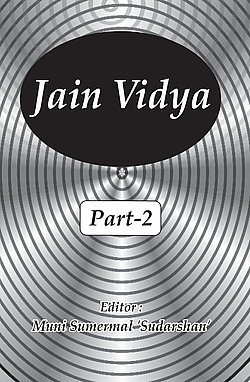Question- Can dharma be bought with money or not?
Answer- No, because it is possible for a person to do dharma only by means of renunciation, austerities and righteous conduct. One can't receive it from outside. It has also been said, "Dharma neither grows in a farm nor is it sold in a market. It results only from one's pious actions."
Question- Can one be made to practise dharma forcibly?
Answer-No, because it is possible only by persuasion and preaching.
Question-Does dharma lies in compassion or violence? Answer- In compassion.
Question- Does dharma lies in renunciation or enjoyment? Answer- In renuciation
Question-Is killing small jivas for the protection of big jivas dharma or not?
Answer- No, because dharma is never possible in violence. Question- Does dharma occurs where attachment, hatred and selfishness prevail?
Answer- No, because attachment and hatred are the causes of violence, there is no dharma in these human propensities.
Question- Is it dharma to incur violence for the sake of deva, guru and religious sect?
Answer- No, because violence is violence. It is an inauspicious act whether it is committed for the sake of a religous sect, gurus or devas.
Question- When the followers of a religious tradition observe nonviolence, contentment, celibacy and austerities, can we call these activities dharma?
Answer- Yes, because dharma is not prescribed for a particular sect. Its doors are open for all.
Question- Do the down-trodden untouchables and the mlechha (non- believers) have a right to practice dharma?
Answer- Why not. They also have consciousness. Lord Mahavira gave the right of doing dharma to every human being. The practice of dharma is beyond any discrimination on the basis of caste, gender etc. it is related to one's soul.
Question- What is dharma?
Answer- Aatmashuddhinam Saadhanam Dharmah The means by which one can purify one's soul constitute dharma. Question- What are these means?
Answer- They are samvara (stopping the inflow of karmic particles) and nirjara (falling of karmic particles), which are possible through renunciation and austerities. They are of many types. For example, abstinence from anger, pride and observing anuvrat code of conduct may also be called the means of dharma.
Question-Do you think that the wordly dharma (samsarika dharma) and transcendental dharma (lokottara dharma) are the same?
Answer- No, they are different.
Question- What is their nature?
Answer- Laukik dharma (worldly dharma) means the observance of social duties and social customs and the lokottara dharma (transcendental dharma) means getting release from karmic bondage and obtaining self-realization.
Question:
- Is there any dharma in the activities caused by attachment and hatred?
- Is incurring violence for the sake of deva, guru and religion, dharma?
- Do the down trodden and non-believers have a right to do dharma?
- What is the characteristic of dharma?
